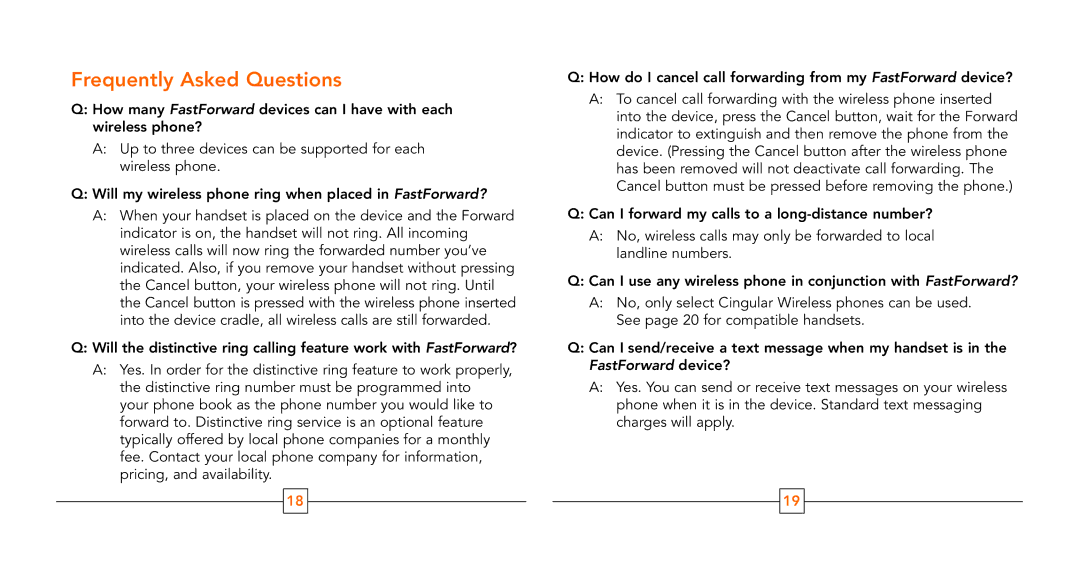T61z, T68m, T226, T316, T68i specifications
Cingular Wireless, a significant player in the mobile telecommunications industry during the early 2000s, launched several notable mobile phone models that catered to various consumer needs. Among these were the Cingular T62u, T68i, T316, T226, and T68m. Each device brought its unique blend of features, technologies, and design characteristics.The Cingular T62u was a versatile mobile phone that emphasized functionality and user-friendliness. It featured a durable flip design, making it compact and easy to carry. The T62u was equipped with a monochrome display, which, while basic by today’s standards, provided clear visuals for messaging and call management. It supported voice dialing and offered customizable ringtones, catering to a younger audience looking to personalize their mobile experience. Its long battery life ensured that users remained connected throughout the day.
The T68i was a groundbreaking device for Cingular, noted for its striking design and impressive features. This phone came with a full-color display, making it one of the first in its category to do so. It also supported multimedia messaging service (MMS), enabling users to share photos and videos easily. The T68i was Bluetooth-enabled, allowing for wireless connectivity with other devices such as headsets and computers. Additionally, it incorporated a Java platform, which meant users could download various applications, enhancing the functionality of their device.
The Cingular T316 was designed with a focus on messaging capabilities. This phone featured a QWERTY keyboard, making it easier for users to text and email. Its compact design and lightweight build made it ideal for users who were constantly on the go. The T316 included various messaging features, such as SMS and email support, and a vibrant display that enhanced the reading experience.
Another model, the Cingular T226, was intended for those seeking a simple, reliable phone without the bells and whistles. It had a straightforward design with an easy-to-navigate interface, making it very user-friendly for first-time smartphone users or those who preferred basic functionality. The T226 excelled in voice calls, offering clear audio quality and decent battery life for day-to-day communication.
Lastly, the T68m was a variant of the T68i, with slight modifications to better suit different regions and user preferences. It retained many of the beloved features of its predecessor, including Bluetooth and MMS, while also providing a solid camera and enhanced message handling capabilities.
In summary, Cingular's T62u, T68i, T316, T226, and T68m were all significant contributors to mobile technology's evolution in the early 2000s, each offering distinct features tailored to meet the varying needs of consumers.

